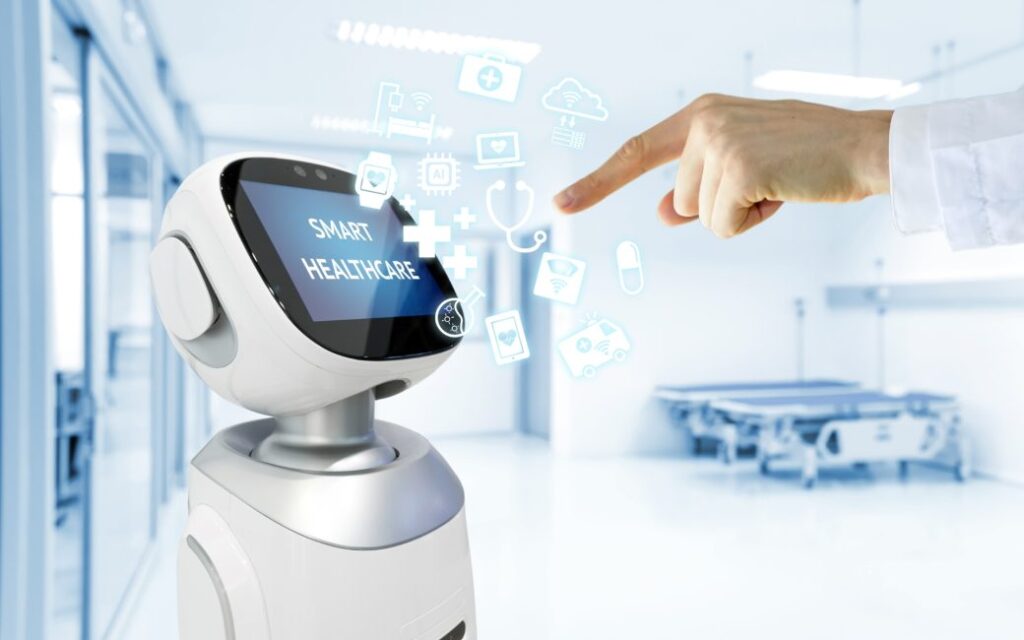Blog
Revolutionizing Physical Therapy with Smart Health Gadgets
Physical therapy has traditionally relied on hands-on techniques and basic tools to help patients recover from injuries, manage chronic pain, and improve mobility. However, advancements in technology are revolutionizing the field, making therapy more effective, accessible, and engaging. Smart health gadgets are now empowering patients and therapists alike by providing real-time data, personalized exercises, and innovative solutions for recovery and rehabilitation.
In this article, we’ll explore how smart health gadgets are transforming physical therapy, the benefits they offer, and the top devices leading the way in this revolution.
1. The Role of Technology in Physical Therapy
Technology is bridging the gap between traditional physical therapy and modern healthcare by offering tools that:

- Enhance Precision: Devices track movements and provide accurate feedback.
- Encourage Engagement: Interactive exercises make therapy more motivating.
- Promote Accessibility: Gadgets allow patients to continue therapy at home.
- Track Progress: Real-time data helps patients and therapists monitor improvements.
With smart gadgets, therapy becomes more efficient and tailored to individual needs, improving outcomes for patients.
2. How Smart Gadgets Are Transforming Physical Therapy
Smart health gadgets are being integrated into every aspect of physical therapy, from assessment and diagnosis to recovery and maintenance. Here’s how they’re making a difference:
1. Wearable Devices for Real-Time Monitoring
Wearables like smartwatches, motion sensors, and posture trackers monitor movements and provide real-time feedback.
- Benefits:
- Tracks range of motion and physical activity.
- Alerts users to improper form or posture.
- Encourages consistency through goal setting and reminders.
- Example: Fitbit and Apple Watch track activity levels and heart rate during therapy exercises.
2. Virtual Reality (VR) Therapy
VR systems create immersive environments to engage patients in physical therapy exercises.
- Benefits:
- Makes therapy sessions enjoyable and interactive.
- Reduces the psychological barrier to exercise, particularly in chronic pain patients.
- Offers gamified experiences for enhanced motivation.
- Example: Oculus VR is used for balance training and motor skill rehabilitation.
3. Robotic Exoskeletons
Exoskeletons assist patients with mobility challenges, enabling them to perform movements they might not otherwise achieve.
- Benefits:
- Supports muscle recovery and retrains walking patterns.
- Aids in neurorehabilitation for conditions like stroke or spinal cord injuries.
- Reduces physical strain on therapists during assisted movement exercises.
- Example: Ekso Bionics develops wearable exoskeletons for rehabilitation.
4. Smart Exercise Equipment
Connected equipment like resistance bands, treadmills, and stationary bikes monitor performance and adjust difficulty in real time.
- Benefits:
- Personalizes workouts based on patient progress.
- Tracks repetitions, speed, and resistance levels.
- Reduces the risk of overexertion by providing real-time insights.
- Example: Peloton and Therabody devices integrate therapy with fitness tracking.
5. Biofeedback Devices
Biofeedback tools monitor physiological responses like muscle tension, heart rate, and breathing during therapy.
- Benefits:
- Helps patients control stress and pain through guided breathing.
- Enhances awareness of muscle activation during exercises.
- Improves posture and form in real time.
- Example: MyoCycle FES uses biofeedback to aid neuromuscular re-education.
3. Top Smart Health Gadgets for Physical Therapy

1. Theragun PRO
- Purpose: Deep tissue massage for pain relief and muscle recovery.
- Features:
- Adjustable intensity for personalized therapy.
- App connectivity with guided routines.
- QuietForce technology for reduced noise.
- Ideal For: Athletes and patients recovering from intense workouts or injuries.
2. Hyperice Hypervolt Go 2
- Purpose: Relieves tension and improves circulation in muscles.
- Features:
- Compact and lightweight design.
- Three speed settings for customizable therapy.
- Long battery life for extended sessions.
- Ideal For: Portable, on-the-go muscle recovery.
3. Bioness L300 Go
- Purpose: Functional electrical stimulation (FES) for foot drop and leg weakness.
- Features:
- Monitors gait patterns and adjusts stimulation accordingly.
- Wireless, lightweight design for ease of use.
- Promotes neuroplasticity in stroke and brain injury recovery.
- Ideal For: Patients with mobility impairments or nerve damage.
4. Oculus Quest 2 VR System
- Purpose: Gamified therapy for balance, coordination, and motor skill improvement.
- Features:
- Immersive environments for engaging therapy sessions.
- Compatible with rehabilitation apps like XRHealth.
- Adjustable difficulty levels for progressive challenges.
- Ideal For: Patients recovering from neurological conditions or injuries.
5. PostureSense Wearable Tracker
- Purpose: Monitors and corrects posture during therapy exercises.
- Features:
- Real-time alerts for improper posture.
- Tracks daily activity and sedentary time.
- Syncs with mobile apps for progress tracking.
- Ideal For: Back pain management and posture correction.
6. Kinesis Balance Trainer
- Purpose: Assesses and improves balance and stability.
- Features:
- Real-time feedback on weight distribution.
- Interactive exercises for balance improvement.
- Tracks progress over time.
- Ideal For: Elderly patients and those recovering from lower body injuries.
4. Benefits of Smart Gadgets in Physical Therapy
Smart health gadgets offer numerous benefits for both patients and therapists:
1. Enhanced Precision:
- Devices track movement, posture, and physiological metrics with high accuracy.
2. Personalized Therapy:
- Gadgets adapt to each patient’s progress, ensuring exercises are safe and effective.
3. Increased Engagement:
- Gamified and interactive features motivate patients to stick to their therapy routines.
4. Remote Accessibility:
- Patients can continue therapy at home, reducing the need for frequent clinic visits.
5. Faster Recovery:
- Real-time feedback and guided exercises improve the efficiency of rehabilitation.
5. Challenges of Using Smart Gadgets in Physical Therapy
While smart gadgets are transforming therapy, they come with challenges:
1. Cost:
- High-end devices like robotic exoskeletons can be expensive.
- Solution: Start with affordable options like wearables or mobile apps.
2. Learning Curve:
- Some patients may find advanced gadgets intimidating.
- Solution: Provide clear instructions and support during the initial phase.
3. Data Privacy:
- Devices collect sensitive health data, which must be protected.
- Solution: Use gadgets compliant with regulations like HIPAA.
6. Future Trends in Smart Health Gadgets for Physical Therapy
The future of physical therapy will be shaped by innovations in smart health technology:
1. AI-Powered Personalization:
- AI will analyze patient data to create tailored therapy plans.
2. Advanced Robotics:
- More accessible and versatile exoskeletons for mobility rehabilitation.
3. Wearable Ecosystems:
- Devices that sync seamlessly for holistic monitoring and therapy.
4. Augmented Reality (AR):
- AR tools will enhance spatial awareness and physical coordination.
5. Teletherapy Integration:
- Gadgets will integrate with telehealth platforms, making therapy more accessible.
Conclusion
Smart health gadgets are revolutionizing physical therapy by making it more precise, engaging, and accessible. From wearable trackers and VR systems to robotic exoskeletons and biofeedback devices, these tools are empowering patients to take an active role in their recovery while providing therapists with valuable insights to enhance care.
As technology continues to evolve, the future of physical therapy will be defined by innovative solutions that prioritize personalization, efficiency, and patient engagement. By embracing smart health gadgets, both patients and healthcare providers can look forward to better outcomes and a more streamlined rehabilitation process.

